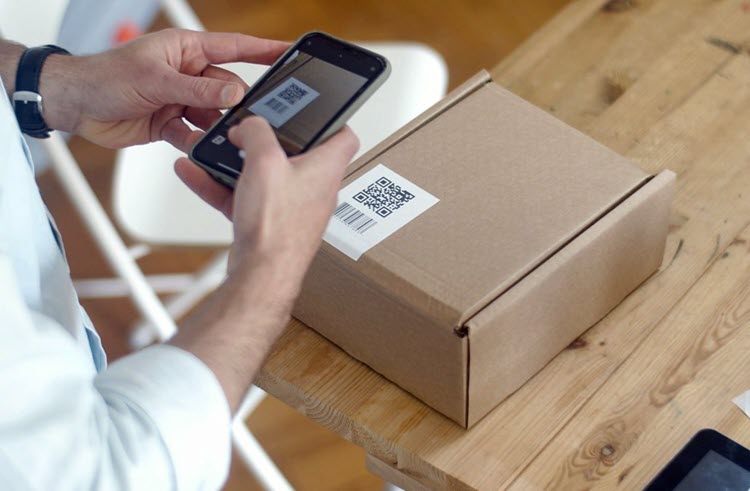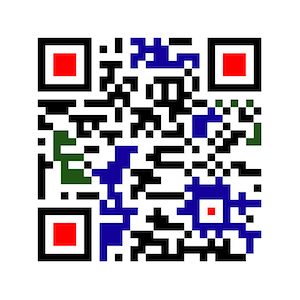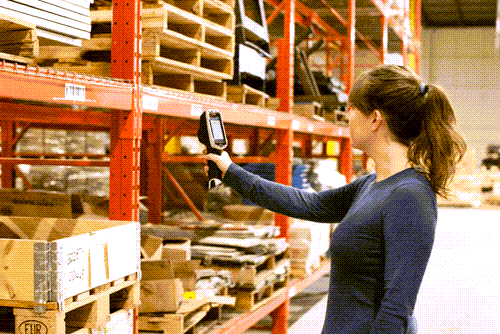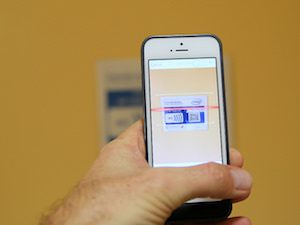What is a QR Code? How Do QR Codes Work?


QR (Quick Response) codes are becoming increasingly common in our daily lives, appearing on everything from product packaging to museum exhibits. They can be scanned using a smartphone or other mobile device to quickly access information or a website.
But what exactly are QR codes used for and how do they work?
This article will provide an introduction to QR codes, what they are and what they do, and walk through all of the advantages and disadvantages of using QR codes for tracking in warehousing and inventory management.
QR codes are becoming more popular both in and out of warehouses and storage facilities. QR codes originated in Japan and are used to take information about an item or business and put it into a cell phone or hand-held scanner.
QR codes first were developed to track parts in the manufacturing process of vehicles. Once the code is read by a cell phone or scanner, it gives more details about a business or item, shows a URL for even more information, provides coupons, and more.

QR codes encode information from left to right and from top to bottom. Also known as matrix barcodes, QR codes hold more data and can encode various types of data because they are encoded in two different directions at once, unlike standard barcodes.
To get a QR code, you first need to decide what information you want to encode. This can be anything from a website URL to a phone number or a piece of text. Once you have decided on the content, you can use a QR code generator to create the code. There are many free QR code generators available online, which allow you to simply enter your content and generate a code instantly.
Most QR code generators will also allow you to customize the appearance of your code, such as changing the color or adding a logo. Once you have generated your code, you can download it as an image file and use it wherever you like, such as on business cards, flyers, or product packaging.
It’s important to note that QR codes are one-way codes, which means that once they are generated, they cannot be edited or updated. If you need to change the content of your code, you will need to generate a new one.

In supply chain management, QR codes are important tools for inventory management and manufacturing. Organizations use QR codes to track more than names and prices of products; they include information including serial numbers, part numbers, lots and dates, and other data.
They also turn to QR codes when their barcode systems run out of capacity because the components they use exceed the maximum number of items they can encode in a standard barcode.
Inventory management professionals also choose QR codes because they typically are more easily read by cell phones and do not require bulky hand-held scanners to read them. In fact, QR codes can be scanned from any direction for 360 degrees, to make it easier for a device to read them and to lessen the chance of having issues with background interference.
Additionally, QR codes can store up to a hundred times more information than a conventional horizontal barcode; businesses are choosing QR codes over standard barcodes because they can store and present URLs, geo coordinates, and text.
QR codes keep costs low because companies do not need to purchase scanners for recording inventory transactions efficiently. Warehouse and storage facility employees prefer to use smartphones for scanning QR codes because they are more convenient and easy to use. Smartphones also do not need to be physically connected to a computer or be in close proximity to one for inventory management operations in a warehouse.
All in all, QR codes are becoming the codes of choice for supply chain operations because they contain more data and information and lend themselves easily to scanning with smartphones.
One of the biggest disadvantages of using QR codes in inventory management is their size. Typically, QR codes need to be at least 2 cm x 2cm in order to be scanned properly.
If organizations want to put more information into the code, they need to enlarge its size to make it usable. This poses a problem for tracking smaller assets.

Many organizations already have asset tracking and inventory management systems that are based on barcodes. Removing labels and relabeling with QR codes is not cost effective for these organizations.
Organizations also avoid using QR codes as part of their inventory management system because scanning them on mobile devices typically takes more time than scanning standard barcodes. This may account for why QR codes have not been as widely adopted as predicted.
Depending on your inventory management needs, QR codes may or may not be a cost-effective solution for you.
Some companies choose QR codes for their inventory and asset management system because they want to enable workers to use smart phones to scan labels rather than hand-held banners. Other companies opt for standard barcodes over QR codes because they do not need to include more data and information in their labels and they need labels that can be scanned more quickly.
While both QR codes and barcodes can be used for inventory management, they differ in several ways. QR codes are two-dimensional codes that can hold much more information than traditional one-dimensional barcodes. QR codes can also be scanned from any direction, while barcodes must be scanned in a specific orientation. Additionally, QR codes can be used to direct users to a website or other source of information, while barcodes are typically used only for identification purposes.
To track assets with QR codes, you first need to create a unique code for each asset. This can be done using a QR code generator, which will allow you to enter the relevant information and generate a code. Once you have your codes, you can affix them to your assets using stickers or tags.
To track your assets, you will need a QR code scanner, which can be a mobile app or a dedicated scanner device. When an asset is moved or checked in or out, the QR code can be scanned to update the inventory database. This allows you to track the location and status of your assets in real-time.
To assign a QR code to a product, you will first need to create a unique code for that product using a QR code generator. This code can then be printed on a label or tag and affixed to the product packaging.
When the code is scanned, it can direct the user to a website or other source of information about the product, such as pricing, specifications, or reviews. This can be a useful marketing tool for businesses, as it allows customers to quickly access information about products and make informed purchasing decisions.
When buying metal QR code tags, choose your material abased on the application requirements. Pay close attention to factors such as durability, appearance, and cost to ensure the tags meet the intended purpose and withstand the environmental conditions they will face.
So when tagging equipment or valuable assets, use metal for QR code tags.
Our sales engineers are experts in automatic asset tracking, tagging and identification,a nd can answer all your questions. Get in touch now.
Lets Talk ›Enter your information and get a free checklist of the top questions to answer and tips to plan a successful asset tagging project for any asset management or tracking system implementation.